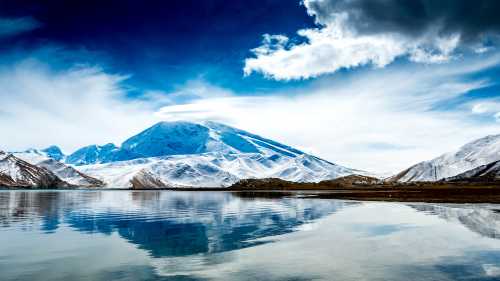Popular Trip Moments
Explore the North and South Xinjiang in 15 Days: A Complete Grand Loop | A travel destination you absolutely must not miss in this life, Xinjiang! 😭 You can experience nature that is more impressive than Europe. | Xinjiang in May: Life is truly wild | Xinjiang Travel Route|One picture to understand, super detailed route | Xinjiang Spring Trip in April-May | 3 Days and 2 Nights Limited-Time Itinerary | 2025 Xinjiang Travel|A steal if you see this! | Breathtaking Places That Will Leave You Speechless!!! | Whispers of the Silk Road: Discover Kashgar | A Journey to Southern Xinjiang | My phone's photo album exploded after a 10-day trip to Xinjiang! | A Kashgar Guide After 5 Visits | A Different Travel in Xinjiang | Jingjue Ancient City, Desert, and Starry Sky | Famous attractions in Kashgar, Xinjiang, China: Gaotai residential buildings, suitable for checking in and taking photos📸 | Famous attractions in Kashgar, Xinjiang, China: Xiangfei Garden, suitable for checking in and taking photos📸 | Guilai Ningju Luxury Accommodation | Why not try the luxury train to travel Xinjiang... | Kashgar Old City: A Canvas Where Time Stands Still | April Getaway | Travel Guide to 4 Off-the-Beaten-Path Cities | Hami City Walk | A Relaxing Journey to Explore Hami and Beyond | 18-Day Journey Through Hami and Beyond: A Complete Guide to the Great Northwest | Southern Xinjiang + Duku Highway 14-Day Pure Travel Guide | City Walk Guide to Turpan and Beyond | 7-day tour of Kashgar area-Kizilsu Super detailed guide | Kashgar Ancient City: Exotic customs that can be experienced without going abroad | Kizilsu-Kashgar 3-Day In-Depth Tour Guide for Friends | 5-Day Spring Trip to Aksu and Other Areas: Don't Miss These Stunning Spots! | 16-day tour of Hami and other places, the best travel guide for the short holiday | 8-Day Tour of Bayingolin Mongol Autonomous Prefecture and More: Don't Miss These Stunning Sights! | Kizilsu-Kashgar Citywalk: Unlock Unique Charm | 18-Day Detailed Travel Guide to Hami and Beyond
Popular Travel Types
Recommended Attractions at Popular Destinations
Bangkok attraction near me | Manila attraction near me | Tokyo attraction near me | Taipei attraction near me | Hong Kong attraction near me | Seoul attraction near me | Kuala Lumpur attraction near me | Los Angeles attraction near me | Shanghai attraction near me | New York attraction near me | Shenzhen attraction near me | Osaka attraction near me | Singapore attraction near me | London attraction near me | Guangzhou attraction near me | San Francisco attraction near me | Beijing attraction near me | Macau attraction near me | Bali attraction near me | Jakarta attraction near me | Paris attraction near me | Ho Chi Minh City attraction near me | Istanbul attraction near me | Phuket attraction near me | Chicago attraction near me | Seattle attraction near me | Toronto attraction near me | Orlando attraction near me | Cebu attraction near me | Chiang Mai attraction near me
Popular Restaurants in Kashgar
A Hundred Year Old Tea House | 麦麦提沙吾提师傅的儿子抓饭店 | 亚瓦格古老凉粉凉皮店 | 土公羊烤肉销售店 | 达瓦依合扎抓饭店 | 凯麦尔丁蓝鸽子 | Ancient Lane Coffee House | Zahra Cake Restaurant | 艾力扎提抓饭拉面馆 | 老城角落 | Ai Ni Chun Yang Kao Rou Dian | nulan Restaurant | Altun Jam | 古城阿布力米提缸肉烤肉店 | AK KOQKAR | 明邀乐海尔巴格三楼餐饮美都 | Hanbaza Eligo Roasted Chicken Restaurant | 蓝岩鸽营养乳鸽汤馆 | Lan Gong Yang Kao Rou Dian | 喀什二环路牛员外·潮汕鲜牛火锅城 | 重庆小天鹅火锅(环疆新世界) | 爷爷的爷爷的爸爸的馕 | Haierbage Restaurant(Kashgar Branch) | JINZHU CHICKEN | 安萨孜美食馆 | Azimaiti Baked Lamb Bun Restaurant | Ai le re Roast Lamb Naan Steamed Buns | 深业丽笙酒店餐厅 | 新生命鸽子汤店 | 海陆空土坑烧烤
Popular Ranked Lists
Top 9 Local Restaurants in Wuzhou | Popular Premium Hotels in Vinh Phuc Province | Top 8 Local Restaurants in Meishan | Popular Premium Hotels in Rivers | Top 15 Local Restaurants in Cameron Highlands | Top 10 Local Restaurants in Youyang County | Popular Luxury Hotels Near East Brunswick | Top 6 Local Restaurants in Deqin | Popular Premium Hotels in Thap Put | Top 4 Local Restaurants in Xiuwu | Popular Luxury Hotels Near Takeo | Top 8 Best Things to Do in Dandong | Top 10 Local Restaurants in Hat Yai | Popular Luxury Hotels Near Boljoon | Top 4 Best Things to Do in Jiangmen | Popular Best Things to Do in Guiping | Popular Best Things to Do in Daocheng | Popular Luxury Hotels Near Grad Korcula | Popular Luxury Hotels Near Fell Lapland | Popular Premium Hotels in Miches | Top 10 Local Restaurants in Fuding | Popular Premium Hotels in Grad Korcula | Popular Premium Hotels in Maggona | Popular Premium Hotels in Port Harcourt | Top 6 Local Restaurants in Arxan | Popular Luxury Hotels Near Kongsberg | Top 9 Local Restaurants in Lushan Global Geopark | Popular Premium Hotels in Torquay | Popular Premium Hotels in Brentwood Bay | Top 9 Best Things to Do in Turpan
Payment Methods
Our Partners
Copyright © 2025 Trip.com Travel Singapore Pte. Ltd. All rights reserved
Site Operator: Trip.com Travel Singapore Pte. Ltd.
Site Operator: Trip.com Travel Singapore Pte. Ltd.






























